One of the reasons that I love Indian cuisine is that there is such a multitude of vegetables that are consumed. I love meat (and I love Indian meat dishes), but vegetables are a great accompaniment. Unfortunately, with American food and grocery stores, diversity in vegetables is somewhat hard to come by. And for this, I cherish trips home to my mom’s house. The last time I visited, my mom, Tricia, and I ventured out to one of the local Indian markets in central Massachusetts. In looking for vegetables for dinner, we came across a banana flower. This is a rare treat that is usually not found even in Indian stores around here. The banana flower is literally the flower that precedes the fruit of a banana tree. You can peel it and eat the heart and the bracts (the pods that will develop into banana fruits), which are absolutely delicious. The catch with a banana flower is that it is a bit of hassle to get the bracts and heart out. But Tricia and I made a team effort out of it and the end product was absolutely worth it!
Ingredients
- 1 banana flower, peeled, bracts and hearts removed and separated (see below)
- 2 dried red chilies
- 1 tbsp grated raw coconut (fresh or frozen)
- 2 tbsp chana dal (yellow split peas), boiled until soft in 1 cup of water ahead of time
- 1/2 red onion, chopped fine
- 1 tsp red chili powder (Swad or other Indian Brand)
- 1/4 tsp turmeric powder
- 1 tsp coriander powder
- 1/2 tsp cumin powder
- salt to taste
First of all, this is actually two recipes in one. We cook the young bracts and the heart in one way and the older bracts in another. But since you will be removing both at the same time, it’s best to make both on the same day.
Okay, to start, peel the outer layers of the flower off. After a few layers, you’ll start to see tubular pods with yellow tips – these are the bracts that we are going to eat (see below).
Pick each one off, and you’ll find that there is a harder/stiffer black part in the middle. That is not edible, so pick it out and discard.
Beware, the black stains your nails and possibly your clothes. We set up a newspaper covered floor to help us keep clean.
Keep peeling away layers, removing bracts, and discarding the dark part. collect the picked bracts in one bowl. This is laborious as I mentioned, and again, it’s best to have at least two people working at it. As you go, the bracts will get smaller and smaller. Eventually, you’ll find bracts that are pure white and don’t have the black part in the middle (like in the next image). These are the young ones, and we’ll keep these in a separate bowl. At the end, you’ll reach the heart, and you can include this with the young bracts. The heart looks and actually tastes similar to an artichoke heart.
The young bracts are very simple to cook. Start by heating a saute pan over medium high heat. Add 1-2 tbsp oil and allow to heat up. Add half of your chopped onions (so about 1/4 onion) to the oil and allow to toast and become fragrant. When this happens, add the young bracts and heart into the pan. Mix to coat with oil. After this, add the chili powder, cumin powder, and coriander powder. You could adjust the chili powder amount to control heat. Next add salt to taste – a good rule in Indian cooking is to use the same amount of salt as chili powder. This balances the flavors and brings out the flavor in chili (its not meant to be just HOT, it gives great flavor that only salt can evoke!). Reduce the heat to medium. Once the bracts and heart are tender (about 5 minutes), remove from heat. They are now ready to eat.
The older bracts require a bit more work. Start by chopping them. The largest bracts will be cut in about 3 pieces, as shown below. Now, since these are not as tender as the young bracts, we start by steaming them for 7-10 minutes in a double boiler or bamboo steamer.
After steaming, the bracts are ready to saute. Again, heat 1-2 tbsp oil in a pan over medium high heat. And again, when the oil is hot fry the onions until fragrant. Next, add the the dried chilies, breaking them with your hands as you add them (CAUTION: wash hands immediately to avoid burning your face later). Once the chilies are fragrant, add the coconut and softened dal (lentils). Quickly toss those in the pan, and then add the bracts. Salt them to taste, and cook until they are tender. Now you can enjoy two tastes of the banana flower at the same time! I recommend eating these with rice, yogurt, and a few other vegetables and maybe a meat too, as Indian meals are meant to have a lot of variety. Hopefully you like this rather unique Indian dish!
A Note on the Ingredients: grated coconut can be painstakingly taken out of coconuts from the grocery store, but this is difficult without special equipment. Check a local Indian store to get frozen grated coconut instead. Chana dal is a split pea or type of lentil. Easy to find at Wegman’s or any Indian store (if you don’t have a world-minded grocery store like Wegman’s). The same is true of all the spices and chilies I used in this recipe. If you have any questions on the ingredients, please contact me and I’ll be glad to answer!


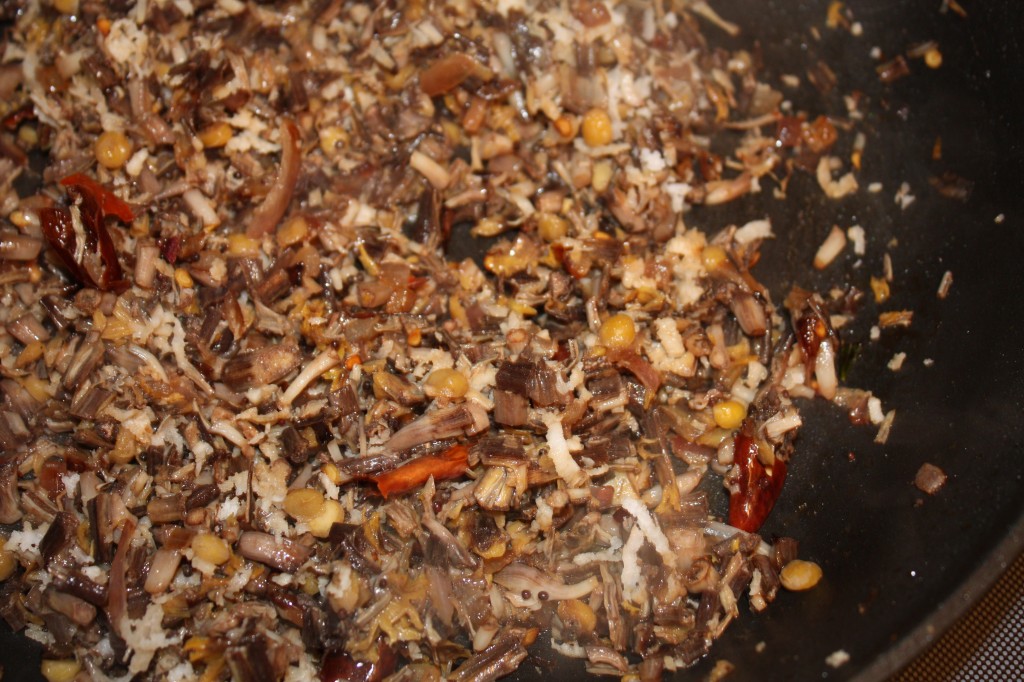
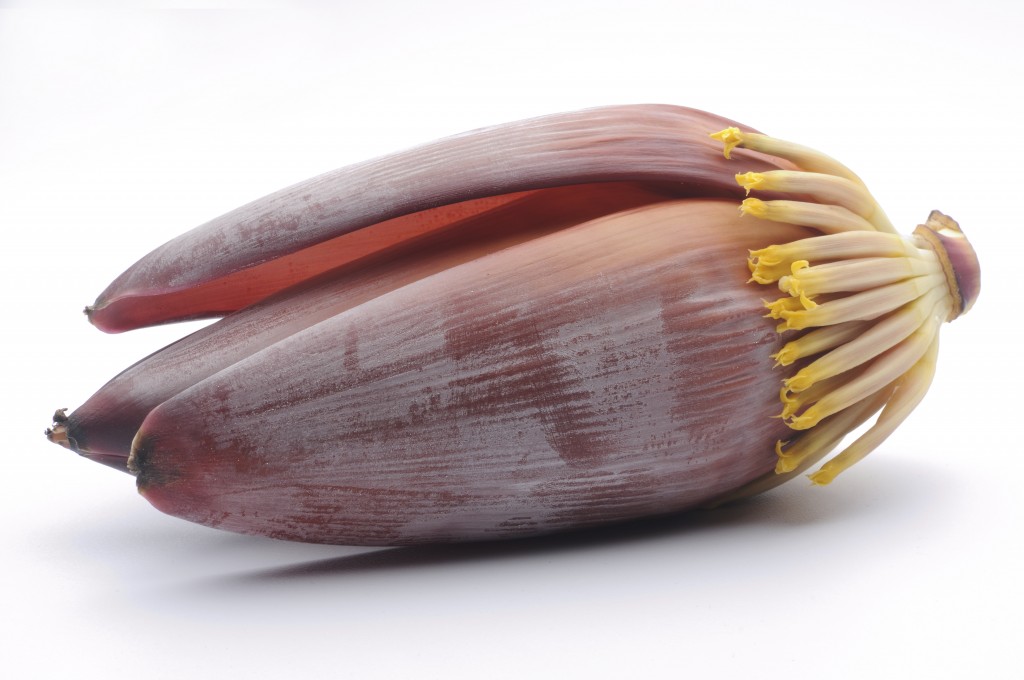
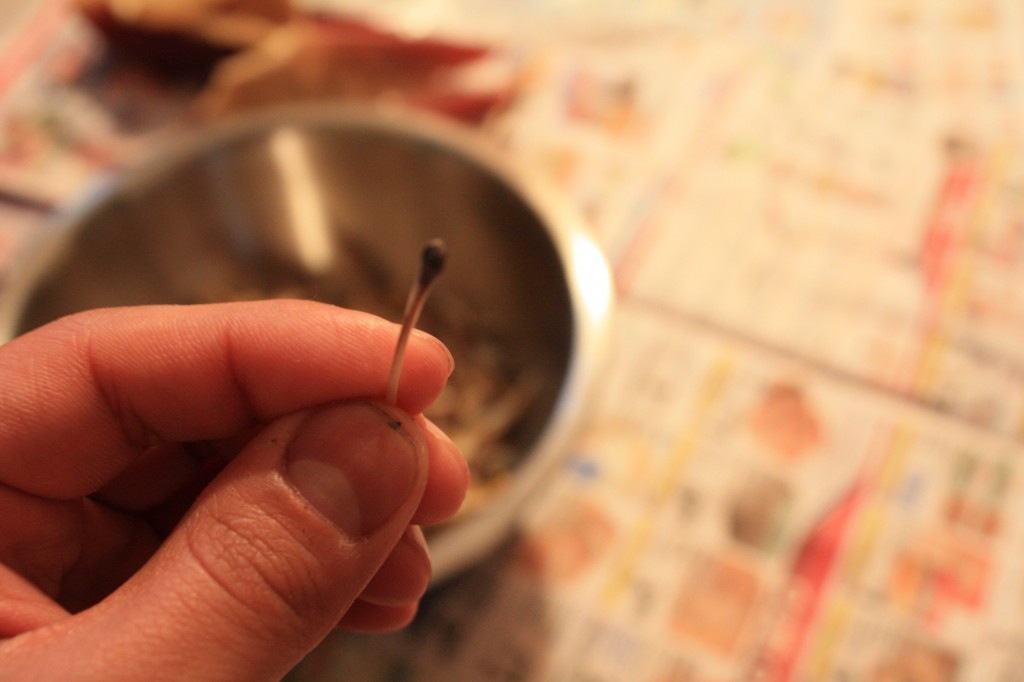
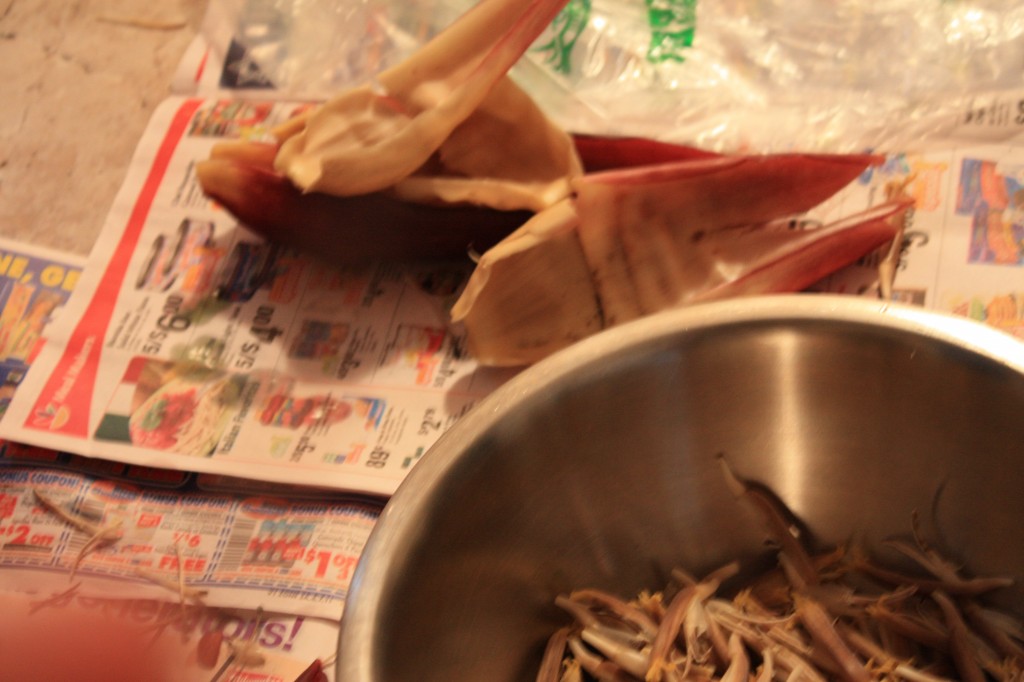
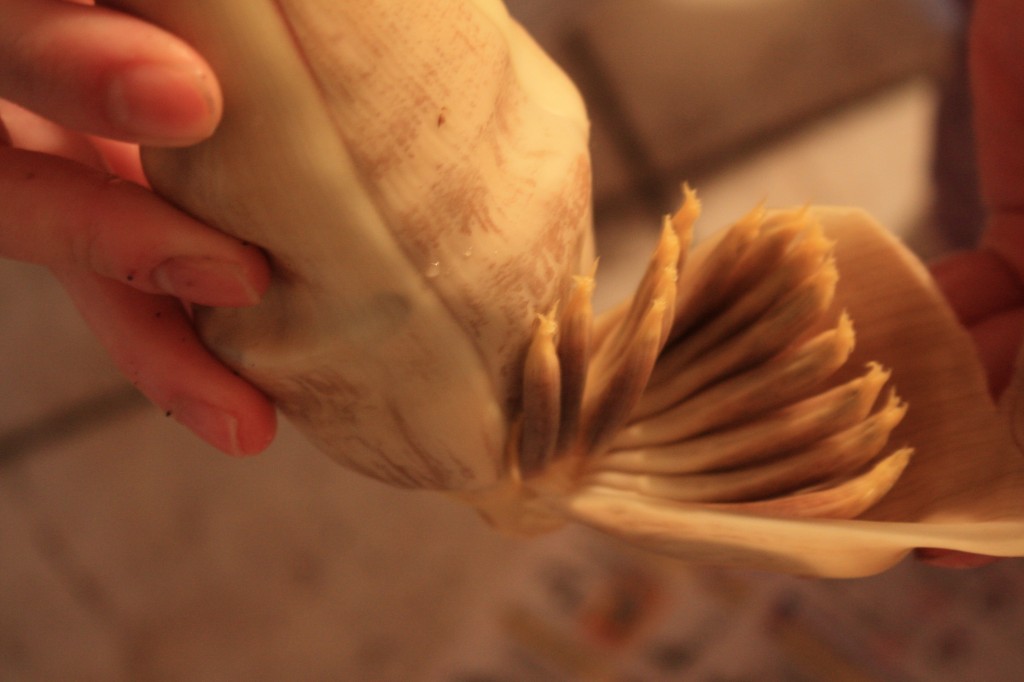
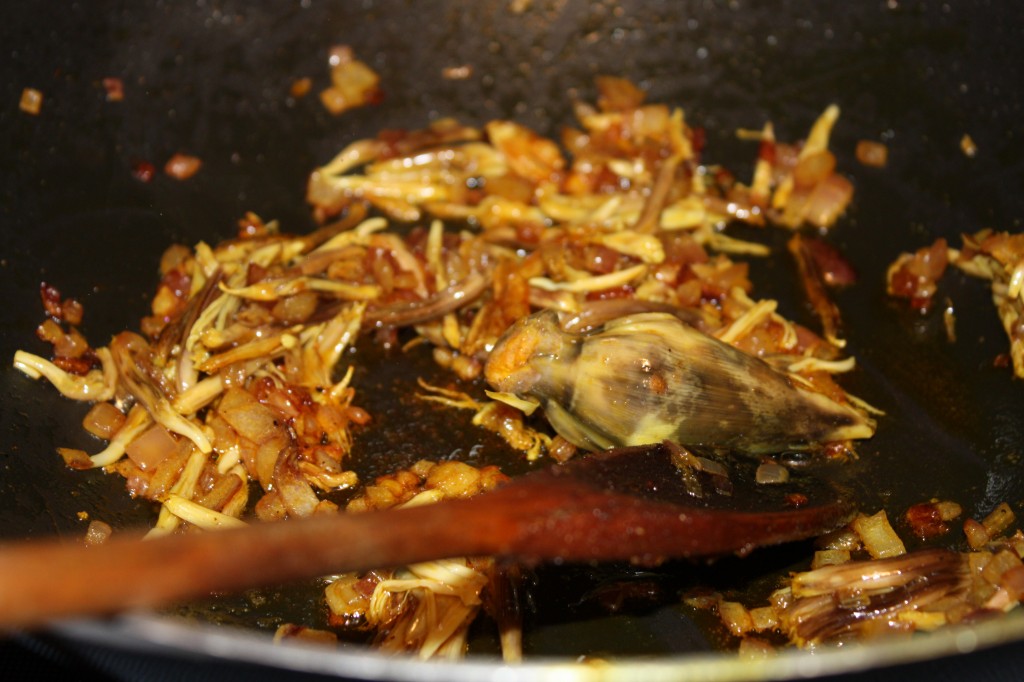
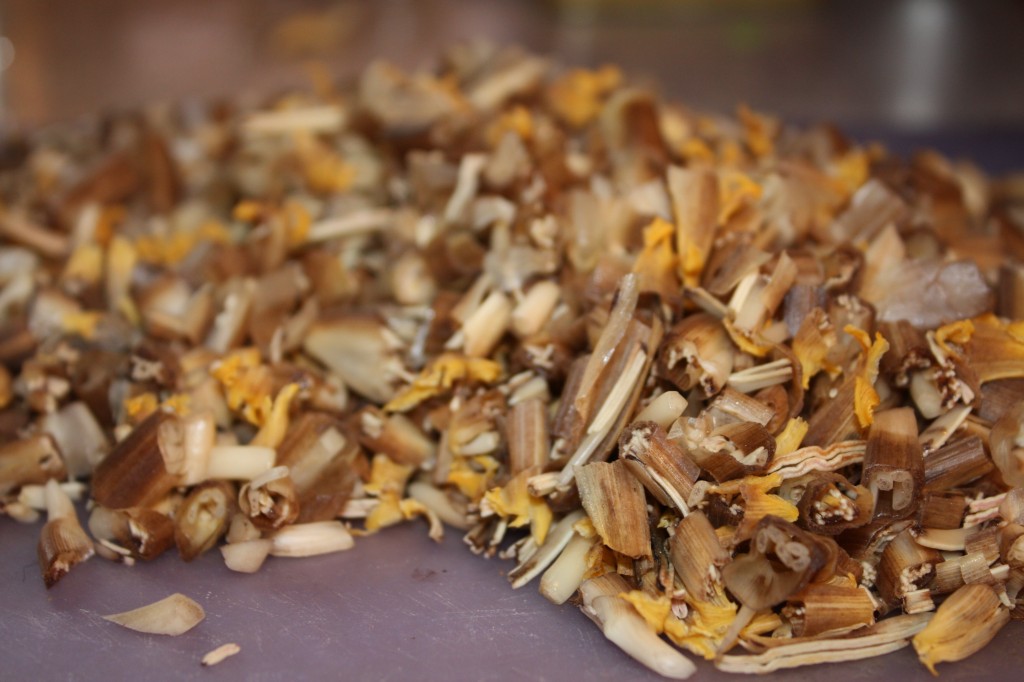
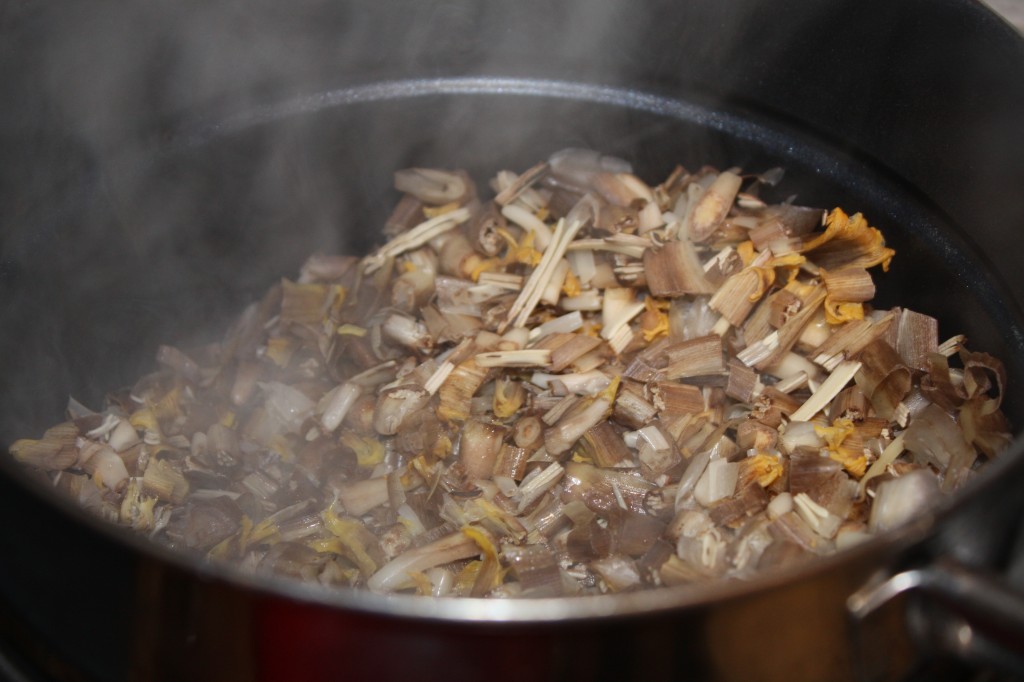
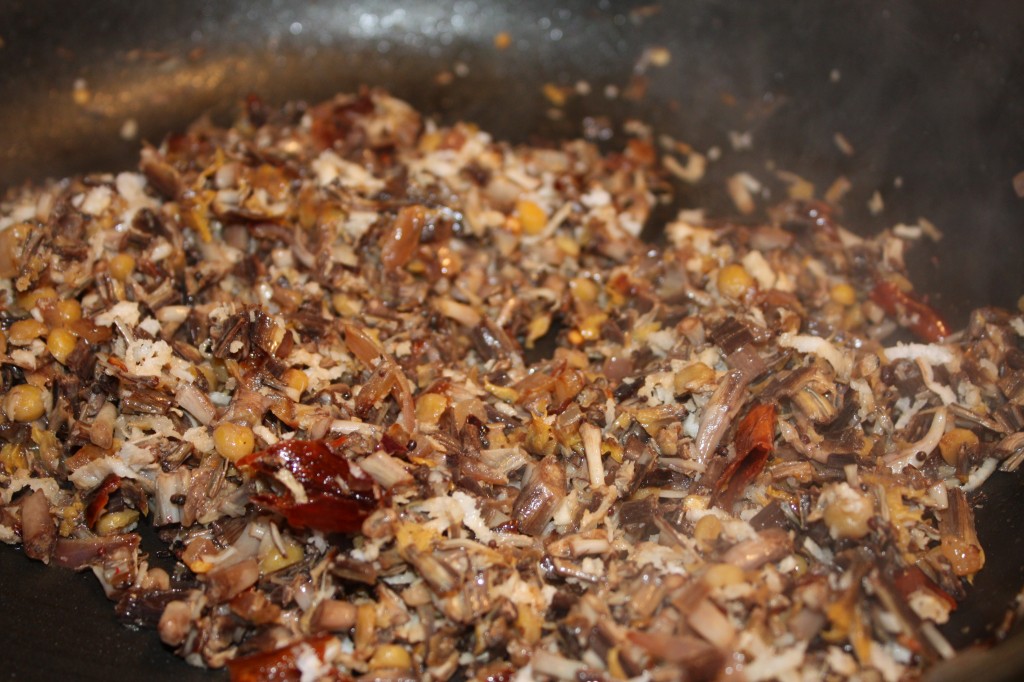
Beautiful pictures!
The picture-taking process was a major part of the fun! Capturing ourselves making a mess (but then turning it into some tasty) was great.